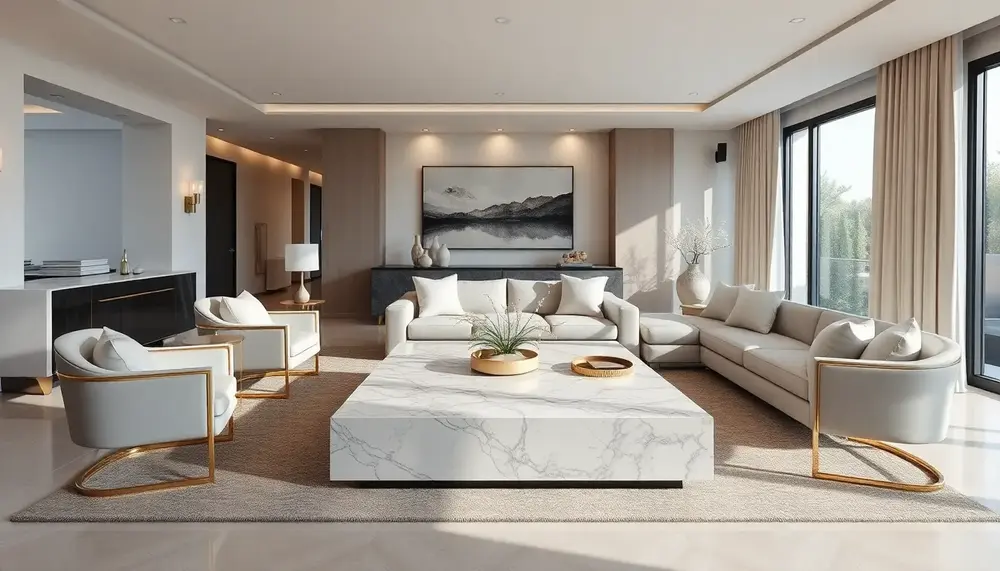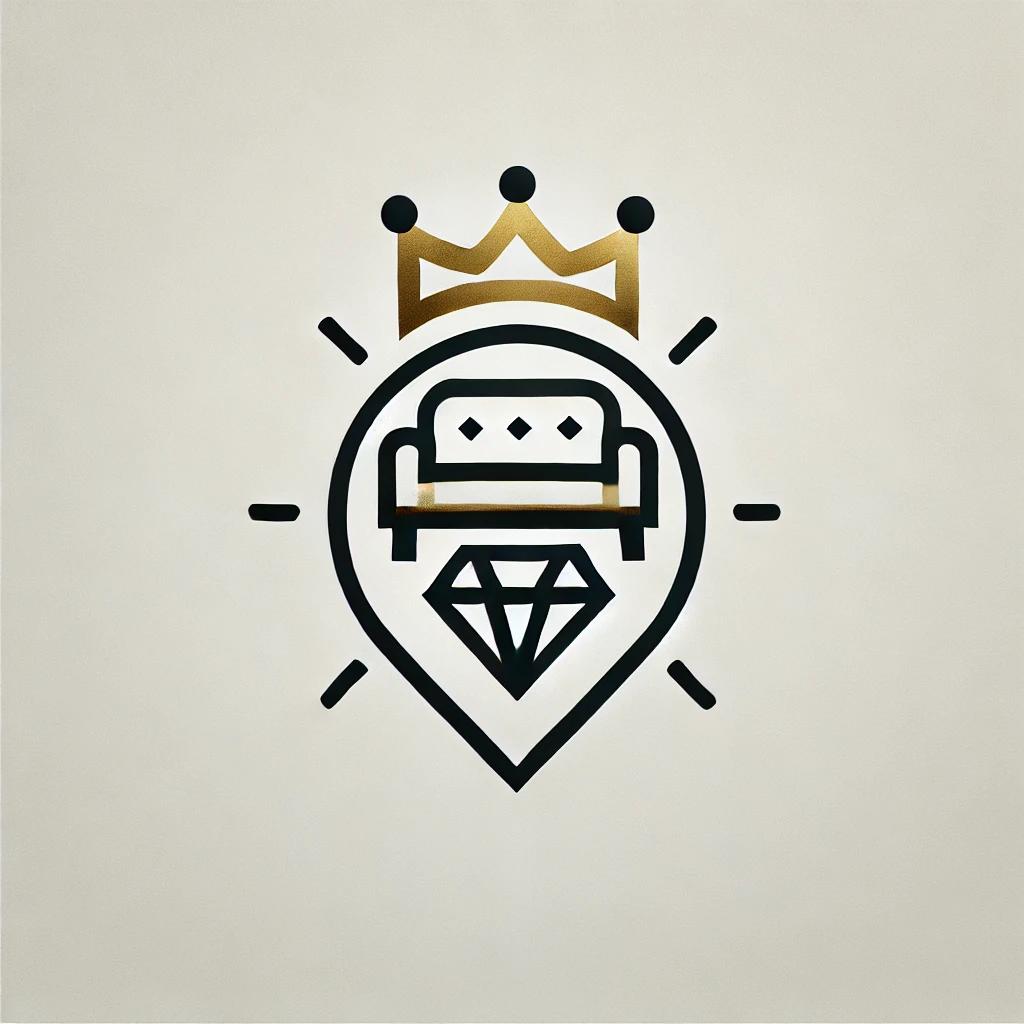Table of Contents:
Key Market Insights Revealed at the Luxury Home Design Summit
Key Market Insights Revealed at the Luxury Home Design Summit
Staying ahead in the luxury design market means you need more than a passing glance at trends—you need the inside scoop. At the 2026 Luxury Home Design Summit in Chatham, Massachusetts, the most actionable market insights are not just discussed, they’re dissected and put under the microscope. Here’s what’s truly moving the needle right now:
- Demand for Enduring Value: Buyers are increasingly seeking homes that offer both immediate wow-factor and long-term adaptability. Think spaces that morph with lifestyle changes—flexible floor plans, modular luxury furnishings, and smart infrastructure are the new must-haves.
- Shifting Demographics: The rise of younger, globally connected buyers is reshaping expectations. This cohort values seamless digital integration, eco-conscious materials, and personalized design experiences over traditional opulence.
- Data-Driven Design Decisions: Designers and developers are leveraging real-time market analytics to anticipate buyer preferences. This means less guesswork and more precision—projects are tailored to micro-trends, not just broad market waves.
- Resilience and Wellness: There’s a surge in demand for homes that actively support health and well-being. Air purification systems, biophilic design elements, and dedicated wellness zones are now essential, not optional.
- Global Supply Chain Adaptation: Volatility in sourcing has led to a renewed focus on local artisans and regional suppliers. This shift not only supports sustainability but also injects authenticity and uniqueness into luxury projects.
These insights, gathered directly from summit panels and expert roundtables, offer a roadmap for anyone determined to outpace the competition in the high-end design arena. Miss these signals, and you risk falling behind in a market that rewards agility and vision.
Cutting-Edge Innovations Transforming Luxury Home Design
Cutting-Edge Innovations Transforming Luxury Home Design
Right now, luxury home design is buzzing with fresh ideas that go way beyond the expected. At the summit, industry leaders peeled back the curtain on the most disruptive innovations shaping tomorrow’s living spaces. Here’s what’s actually making waves:
- Immersive Digital Twins: Advanced 3D modeling and virtual reality are now standard in high-end project planning. Clients can walk through photorealistic versions of their future homes, tweaking layouts and finishes in real time—no more relying on imagination alone.
- Smart Materials with Adaptive Properties: Surfaces that change color or opacity at the touch of a button, antimicrobial countertops, and climate-responsive glass are moving from prototype to mainstream in luxury builds.
- Invisible Tech Integration: Home automation is going stealth. Integrated speakers, lighting, and security systems disappear into walls and ceilings, preserving clean lines and a minimalist aesthetic without sacrificing performance.
- Personalized Artisanal Collaborations: Designers are teaming up with local craftspeople to create one-of-a-kind features—think hand-forged hardware, bespoke mosaic walls, or sculptural lighting—giving each project a signature touch that can’t be replicated.
- Modular Outdoor Living: Flexible, weather-adaptive outdoor rooms are redefining luxury exteriors. Retractable roofs, movable partitions, and climate-controlled terraces extend the living space and blur the lines between inside and out.
Honestly, these aren’t just incremental upgrades—they’re redefining what’s possible in high-end living. If you’re not experimenting with these innovations, you’re already a step behind.
Sustainable Strategies and AI: The New Drivers in High-End Interiors
Sustainable Strategies and AI: The New Drivers in High-End Interiors
High-end interiors are entering a new era, where sustainability and artificial intelligence are not just buzzwords—they’re essential drivers of value and innovation. The summit spotlighted strategies that go far beyond recycled materials or energy-efficient appliances. Here’s what’s actually setting the pace:
- Closed-Loop Design Processes: Top studios are adopting circular design models, where every material is tracked from sourcing to end-of-life. This means waste is minimized, and components are chosen for their ability to be reused or repurposed in future projects.
- On-Demand Manufacturing: AI-powered platforms are enabling designers to produce custom furnishings and finishes only when needed, slashing excess inventory and reducing carbon footprints. No more overproduction—just precision and efficiency.
- Predictive Maintenance for Longevity: Smart sensors and AI algorithms now monitor wear and tear in real time, prompting proactive repairs and upgrades. This extends the life of luxury interiors and keeps them looking flawless year after year.
- Data-Driven Sourcing: Designers are leveraging AI to analyze supply chain data, selecting vendors and materials based on environmental impact, ethical practices, and even social responsibility scores. It’s not just about style—it’s about stewardship.
- Dynamic Energy Optimization: AI systems continuously learn and adapt to residents’ habits, automatically adjusting lighting, climate, and energy use for maximum comfort and minimum waste. The result? Interiors that are as smart as they are stunning.
These strategies aren’t just ticking boxes—they’re fundamentally changing how luxury interiors are conceived, built, and lived in. If you want to lead, not follow, it’s time to embrace these new drivers.
Leadership Approaches for Competitive Advantage in Luxury Design
Leadership Approaches for Competitive Advantage in Luxury Design
Effective leadership in luxury design now demands more than a sharp eye for aesthetics—it’s about fostering a culture where creativity, adaptability, and strategic foresight thrive. At the summit, seasoned leaders shared actionable approaches that are redefining what it means to stay ahead:
- Empowering Multidisciplinary Teams: Forward-thinking firms are breaking down silos, encouraging architects, interior designers, and technologists to collaborate from project inception. This cross-pollination sparks unexpected solutions and keeps projects agile.
- Mentorship-Driven Talent Development: Investing in structured mentorship programs helps nurture emerging talent, ensuring that fresh perspectives are integrated into established workflows. This approach not only retains top performers but also injects innovation at every level.
- Transparent Decision-Making: Leaders are embracing open communication, sharing project goals, challenges, and successes with their teams. This transparency builds trust and aligns everyone toward a shared vision, reducing friction and boosting morale.
- Resilience Planning: Proactive leaders anticipate market shifts and supply chain disruptions, developing contingency plans that safeguard both timelines and quality. This resilience is now a non-negotiable asset in luxury projects.
- Client Co-Creation: The most successful leaders invite clients into the creative process, using workshops and collaborative sessions to ensure every detail reflects the client’s aspirations. This not only elevates satisfaction but also forges lasting relationships.
Adopting these leadership strategies isn’t just about keeping up—it’s about setting the pace in a fiercely competitive market. In luxury design, those who lead with vision and inclusivity are the ones who shape the future.
Real-World Success Stories: Elevating Projects Through Collaboration
Real-World Success Stories: Elevating Projects Through Collaboration
Collaboration isn’t just a buzzword—it’s the secret sauce behind some of the most acclaimed luxury design projects showcased at the summit. The following real-world examples highlight how pooling expertise across disciplines leads to outcomes that single-minded approaches simply can’t match.
- Cross-Continental Design Teams: One standout project united architects in Massachusetts with artisans in Italy and lighting engineers in Japan. By harnessing global talent, the team achieved a seamless blend of local authenticity and international flair, resulting in a penthouse that feels both rooted and cosmopolitan.
- Developer-Designer Partnerships: A boutique developer partnered early with an interior design studio, allowing for joint decision-making from the blueprint stage. This led to optimized layouts, cost efficiencies, and a finished residence that consistently exceeds client expectations.
- Client-Driven Creative Workshops: In one case, a design firm invited the homeowner and their art consultant into a series of creative workshops. The outcome? Bespoke installations and custom furnishings that tell the client’s personal story—turning the home into a living gallery.
- Supplier Integration: By bringing suppliers into the design process from day one, another team avoided last-minute material shortages and secured exclusive finishes. This proactive approach resulted in a smoother build and a more distinctive final product.
These stories aren’t just inspiring—they’re proof that collaboration, when done right, multiplies creativity and elevates luxury projects to new heights. The summit made it clear: true innovation thrives when boundaries dissolve and expertise converges.
Networking That Shapes the Future: Building Strategic Partnerships
Networking That Shapes the Future: Building Strategic Partnerships
Strategic networking at the Luxury Home Design Summit is less about exchanging business cards and more about forging alliances that genuinely move the needle. The event’s unique format encourages purposeful connections, leading to collaborations that extend far beyond the conference walls.
- Curated Matchmaking: Attendees are matched based on complementary expertise and business goals, making each introduction count. This approach streamlines the process, saving time and fostering partnerships that are immediately actionable.
- Private Roundtables: Invitation-only sessions gather decision-makers from architecture, tech, and luxury retail to discuss joint ventures and co-branded initiatives. These intimate settings enable candid dialogue and spark innovative cross-industry projects.
- Mentorship Exchanges: Senior leaders offer guidance to emerging talent, while also seeking fresh perspectives from the next generation. This two-way street accelerates professional growth and keeps established firms agile.
- Long-Term Collaboration Platforms: Digital follow-up tools provided by the summit ensure that connections made onsite evolve into ongoing partnerships. Shared project dashboards and communication channels keep teams aligned after the event.
By focusing on quality over quantity, the summit’s networking framework lays the groundwork for strategic alliances that drive both creative and commercial success in the luxury design world.
Registering for Impact: Preparing to Engage With Industry Leaders
Registering for Impact: Preparing to Engage With Industry Leaders
Securing your spot at the Luxury Home Design Summit isn’t just about attendance—it’s about positioning yourself for maximum influence and visibility among top-tier professionals. Here’s how to prepare for meaningful engagement before, during, and after registration:
- Early Registration Benefits: Those who register promptly gain first access to exclusive pre-event briefings and tailored agenda recommendations, ensuring you don’t miss high-value sessions aligned with your goals.
- Personalized Participation Profiles: Upon sign-up, you can craft a detailed profile highlighting your expertise, project interests, and collaboration goals. This profile is visible to other attendees and speakers, setting the stage for targeted connections.
- Pre-Summit Networking Tools: Registered participants receive invitations to digital meetups and discussion forums weeks before the event. These virtual gatherings help break the ice and identify potential partners or mentors in advance.
- Priority Access to Speaker Q&As: Early registrants are often given priority for submitting questions to keynote speakers and panelists, increasing your chances of direct interaction with industry thought leaders.
- Post-Event Collaboration Hubs: After the summit, registrants gain entry to a members-only platform where ongoing projects, resource sharing, and follow-up meetings are facilitated, turning initial contacts into lasting partnerships.
With thoughtful preparation and strategic use of registration perks, you’ll be ready to engage confidently with the industry’s most influential figures—and transform your summit experience into real-world results.
Frequently Asked Questions About the Luxury Home Design Summit Trends
What are the most significant market trends highlighted at the Luxury Home Design Summit?
The summit spotlighted the demand for adaptable luxury spaces, the growing influence of younger, tech-savvy buyers, increased use of real-time data in design decisions, an emphasis on resilience and wellness features, and a marked shift towards sourcing from local artisans to ensure authenticity and sustainability.
Which innovations are currently redefining luxury home design?
Key innovations include immersive digital twins through advanced VR, adaptive smart materials, seamless integration of invisible tech, unique collaborations with artisans, and modular outdoor living concepts that extend luxury spaces beyond traditional interiors.
How is sustainability being integrated into high-end interior design?
Luxury interiors are embracing closed-loop design processes, AI-powered on-demand manufacturing, predictive maintenance for longevity, data-driven sourcing for ethical materials, and dynamic energy optimization to align stunning aesthetics with responsible stewardship.
What leadership practices set luxury design firms apart?
Successful firms empower multidisciplinary collaboration, foster mentorship-driven talent development, uphold transparency in decision-making, plan proactively for resilience, and actively involve clients in co-creative workshops to create personalized, statement-making results.
How does the summit enable impactful networking and partnerships?
The summit’s networking strategy includes curated matchmaking, invitation-only roundtables, mentorship exchanges, and digital collaboration platforms, ensuring attendees build long-lasting partnerships that fuel creativity and commercial growth in the luxury design sector.






